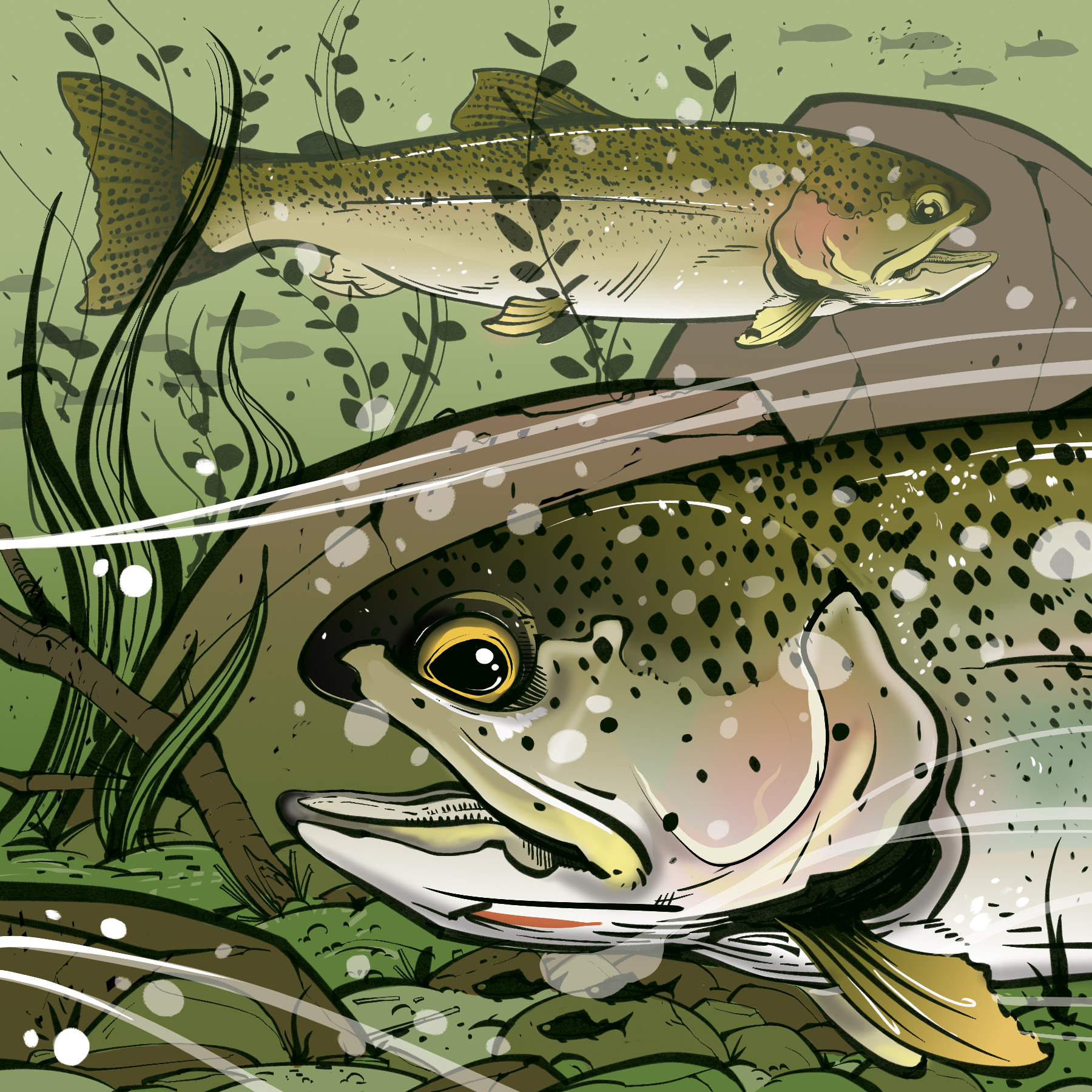The west coast of North America is blessed with a variety of sportfish, both fresh and saltwater species, and some are found in both, including many members of the Salmonidae (salmon-like) family. We BC anglers consider these to be superior gamefish because they are good looking, live in cool, clean water and will take a wide variety of baits, but they can be frustrating to catch, do not come willingly to the net once hooked, and to top it off, they taste good. Coastal cutthroat trout are one such species and are a favourite of many anglers, not for their size particularly, but because they are so feisty and fun to catch.
Advertisement

There are two subspecies of cutthroat trout in BC: the westslope cutthroat trout of the mountain streams of southeastern BC, and the coastal cutthroat trout, found, as the name suggests, along the Pacific coast and up to 100 kilometres inland. Cutthroat trout were first described by Lewis and Clark in their scientific and mapping expedition in 1803 to 1805. That trout was named Salmo clarkii, subspecies lewisii, in their honour. However, genetic research found that the trout of western North America are more closely related to the Pacific (Oncorhynchus) group of fishes than to Atlantic (Salmo) salmonids, so cutthroat trout were reclassified in 1989 to the Onchorhynchus genus.
Coastal cutthroat trout (Onchrhynchus clarkii clarkii) have the typical torpedo shape of salmonids, but they exhibit a variety of body colours and spotting patterns, depending on habitat, age and spawning condition. The general colour scheme is a blue-green back and silver or white belly, all liberally covered with small, black spots. The spotting on the body, fins and tail may be bold or faint, widespread or sparse, and the colour contrast between back and belly colours can be dramatic or muted. The name cutthroat comes from the pair of thin red or orange slashes on the underside of the lower jaw. This is one of the ways to distinguish them from the similar-looking rainbow trout with which cutthroats often share the same water. However, this distinction is not totally reliable because some rainbows have red marking on their lower mandibles and some cutthroats have very faint throat slashes. More conclusive tests, such as the presence of brasibranchial (back of the tongue) teeth in cutthroats, are not as easily done, particularly on a fish that may be released.
Advertisement
There is a wide variety of life histories exhibited by coastal cutthroat trout in BC and a wide range of sizes. The smallest cutthroats, those residing in cold headwater streams, may not weigh more than 100 grams even at maturity because food is so scarce. At the other end of the size range are anadromous (sea-run) cutthroat that can get to two kilograms, thanks to more and larger food items available in shallow saltwater habitats and estuaries. Lake resident and river resident cutthroats are somewhere in between those size extremes (although, in the productive lakes of the southwestern US, cutthroat trout can grow huge and the world record is 19 kilograms.) An unusual lifestyle is that of the semi-anadromous cutthroat trout, who spend summers in saltwater and then follow the salmon into the coastal streams to feed on salmon eggs, and later on salmon fry, after spending the winter in fresh water.
Coastal cutthroat trout are opportunistic feeders, and the menu includes a wide variety of insects, aquatic invertebrates and small fish such as salmon fry, sculpins and smaller trout. Regardless of size, these fish have a reputation for liking a large meal, I once caught a nine-inch cutthroat on a four-inch buzz bomb.
Advertisement
Cutthroat trout have managed to colonize a remarkable range of habitats. They colonized pristine headwater streams, often well above the range of other fish species. Meanwhile, the same species is more tolerant of urbanized stream habitats than other salmonids, and they can be found in channelized creeks, drainage ditches and sloughs. In saltwater, cutthroats spend most of their time close to shore and visit harbours, marinas, kelp beds and rocky headlands and they can be caught by anglers casting from a beach.
BC anglers understandably focus on the many salmon and steelhead fishing opportunities in our province, but coastal cutthroat trout should not be overlooked. Streams in town, a favourite ocean beach, coastal lakes, river mainstems or the small creeks and lakes high in the mountains are all potential habitats for this feisty little gamefish.